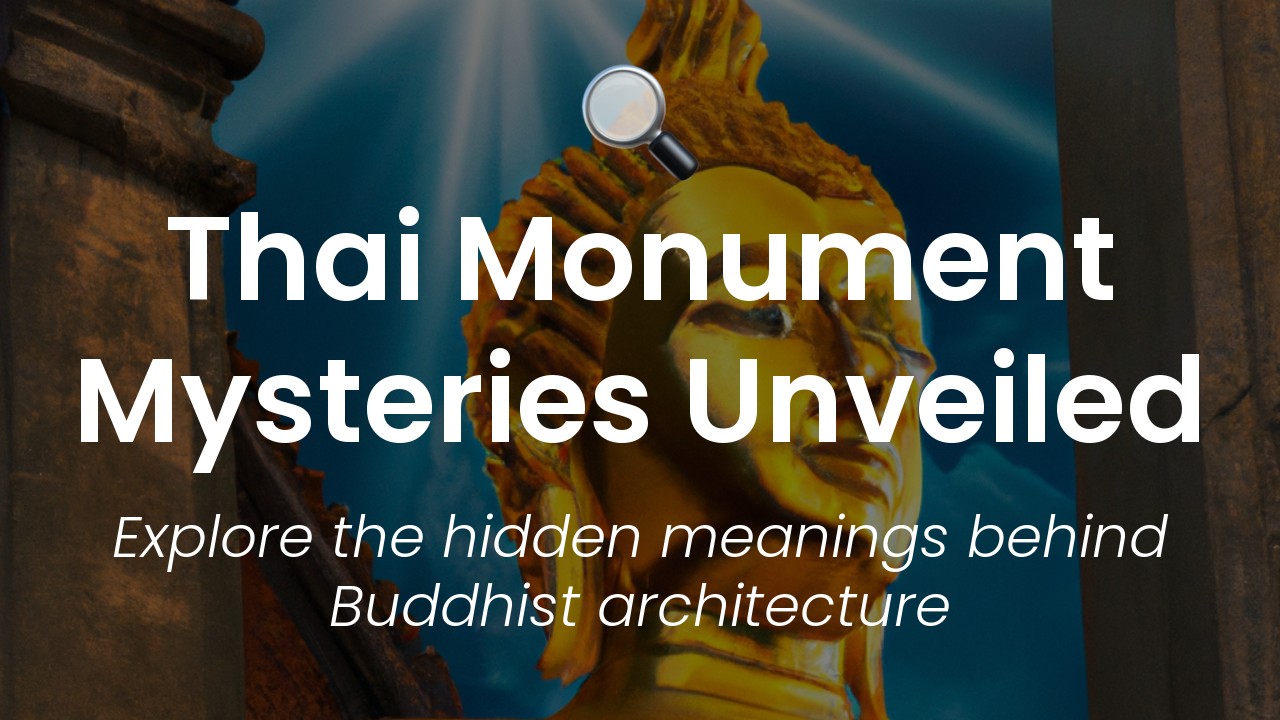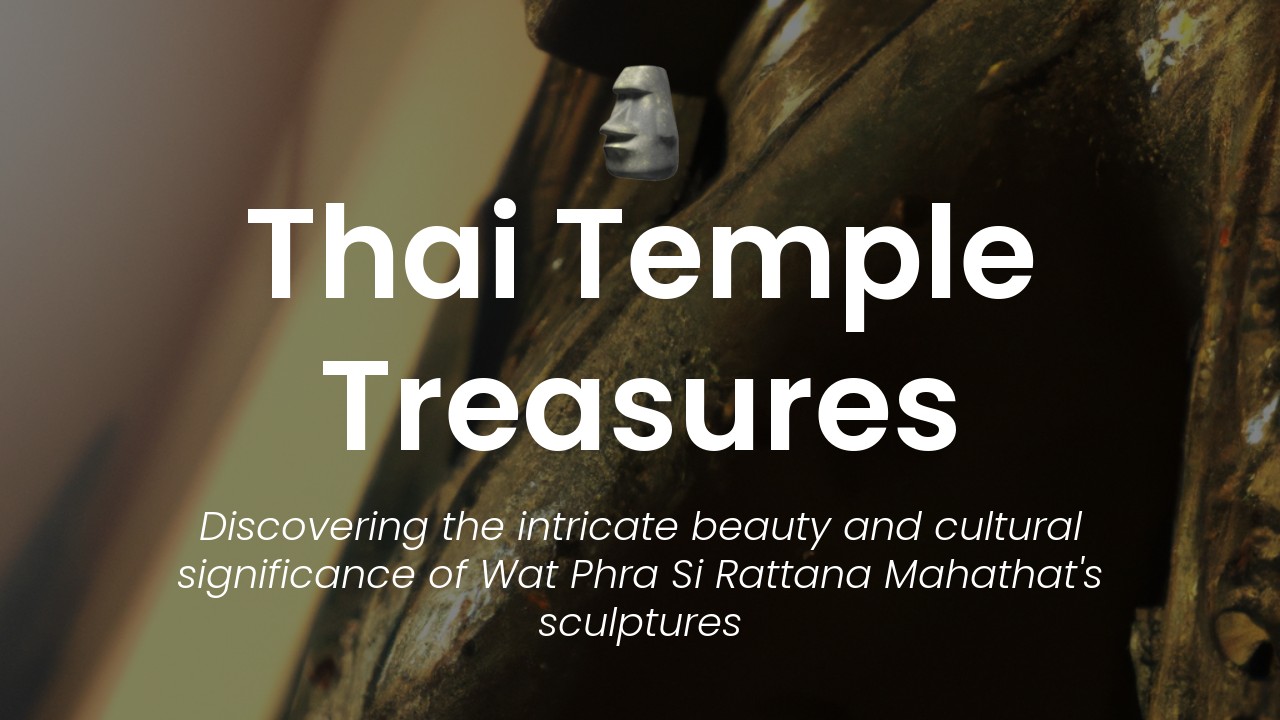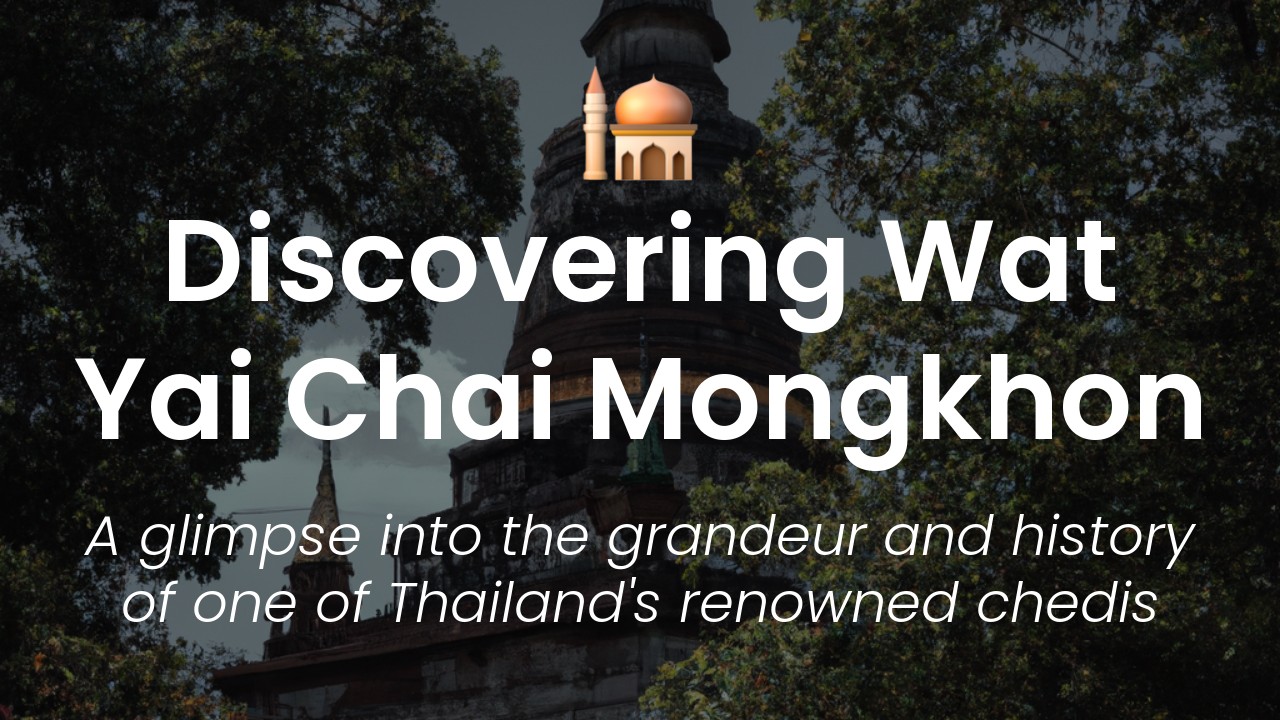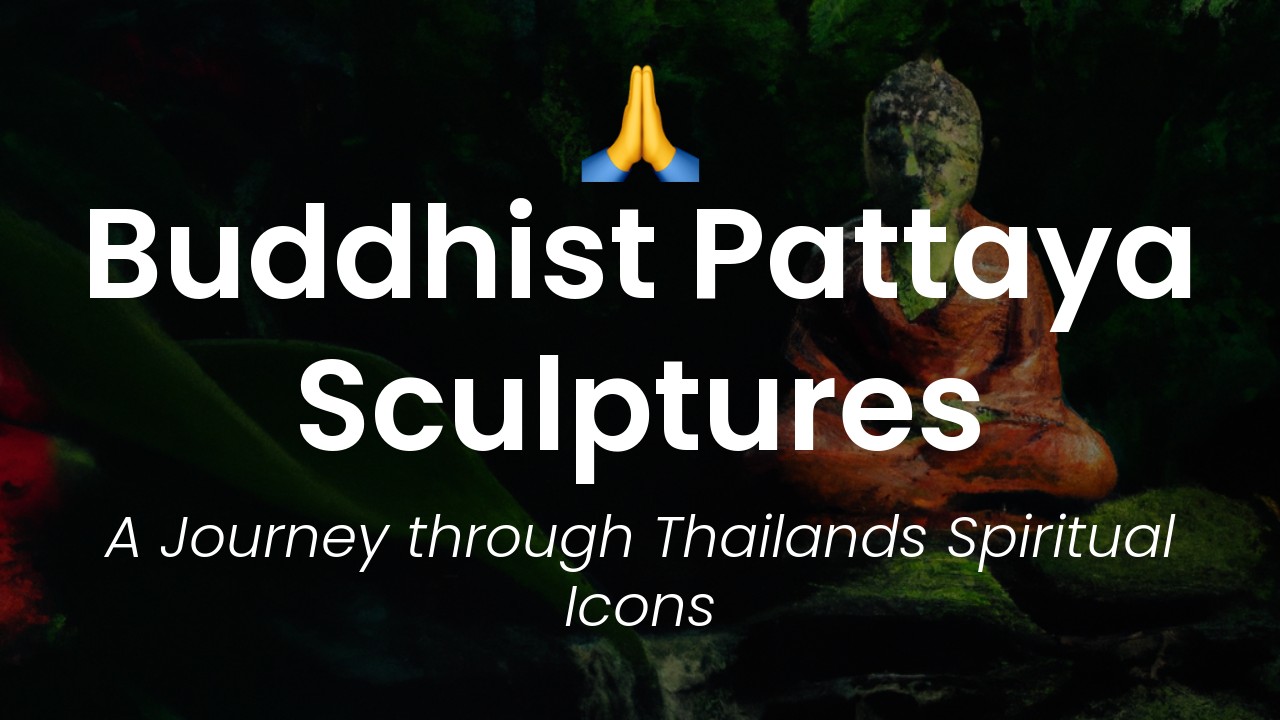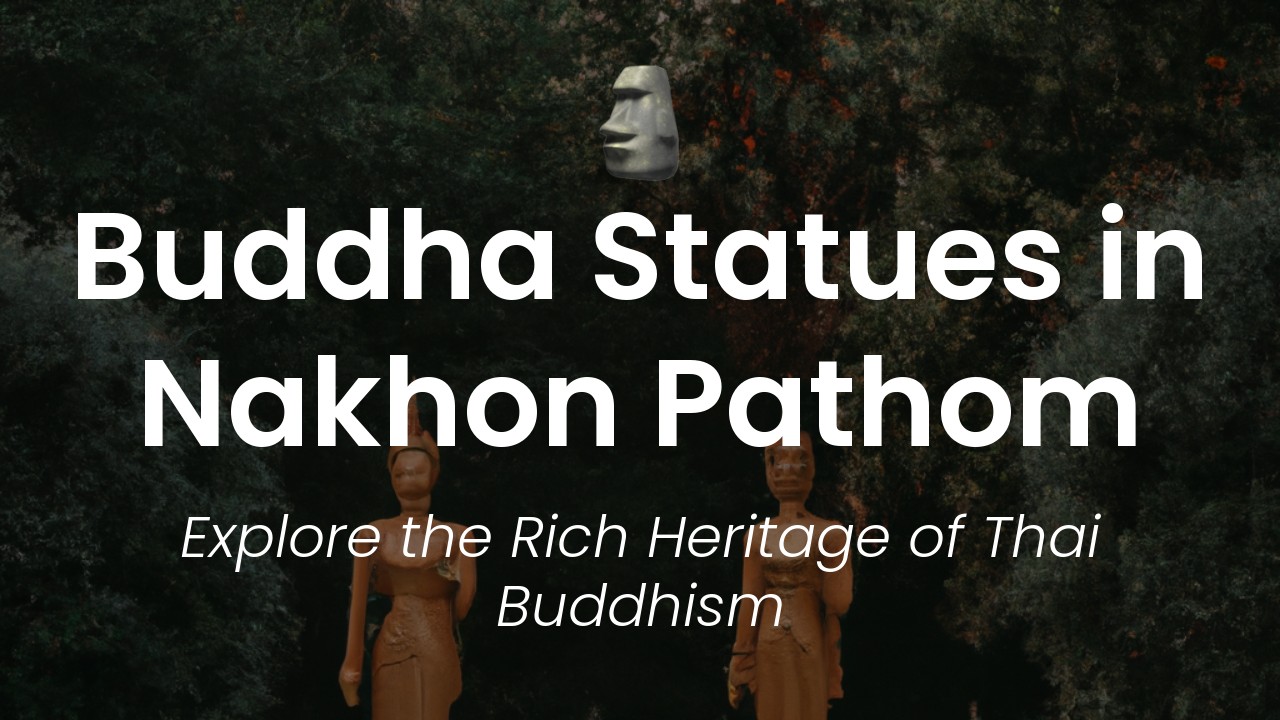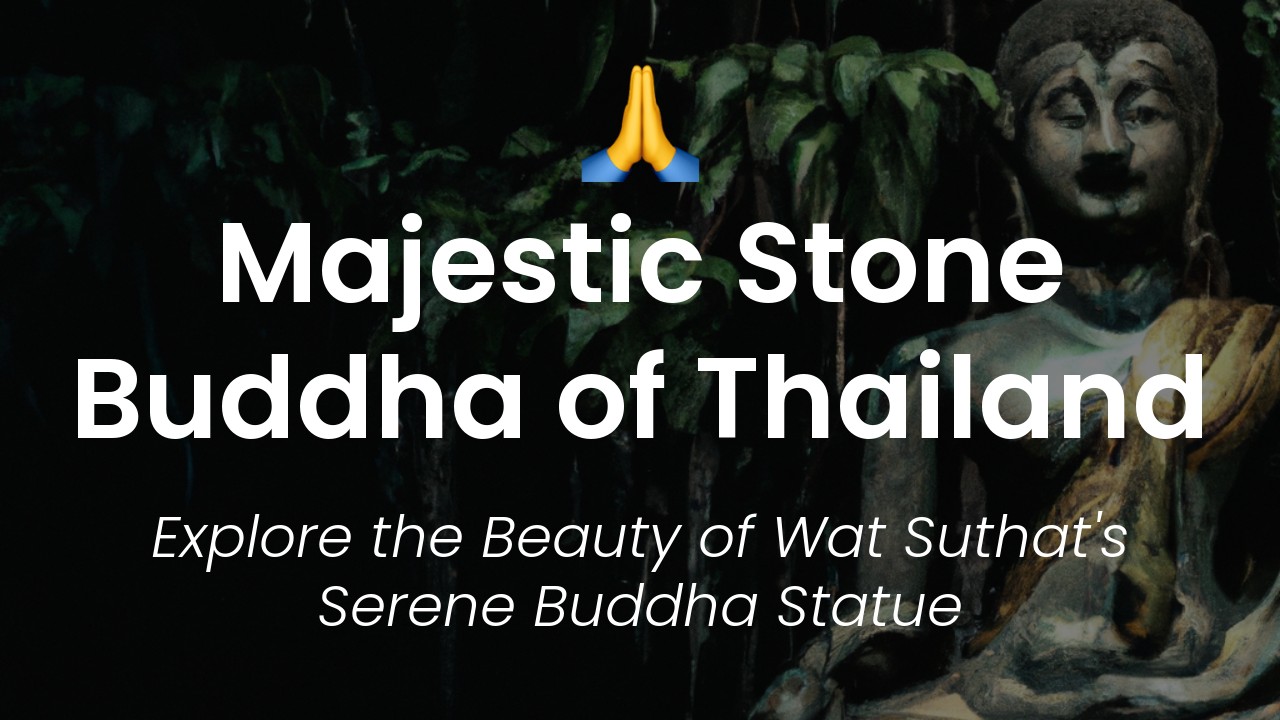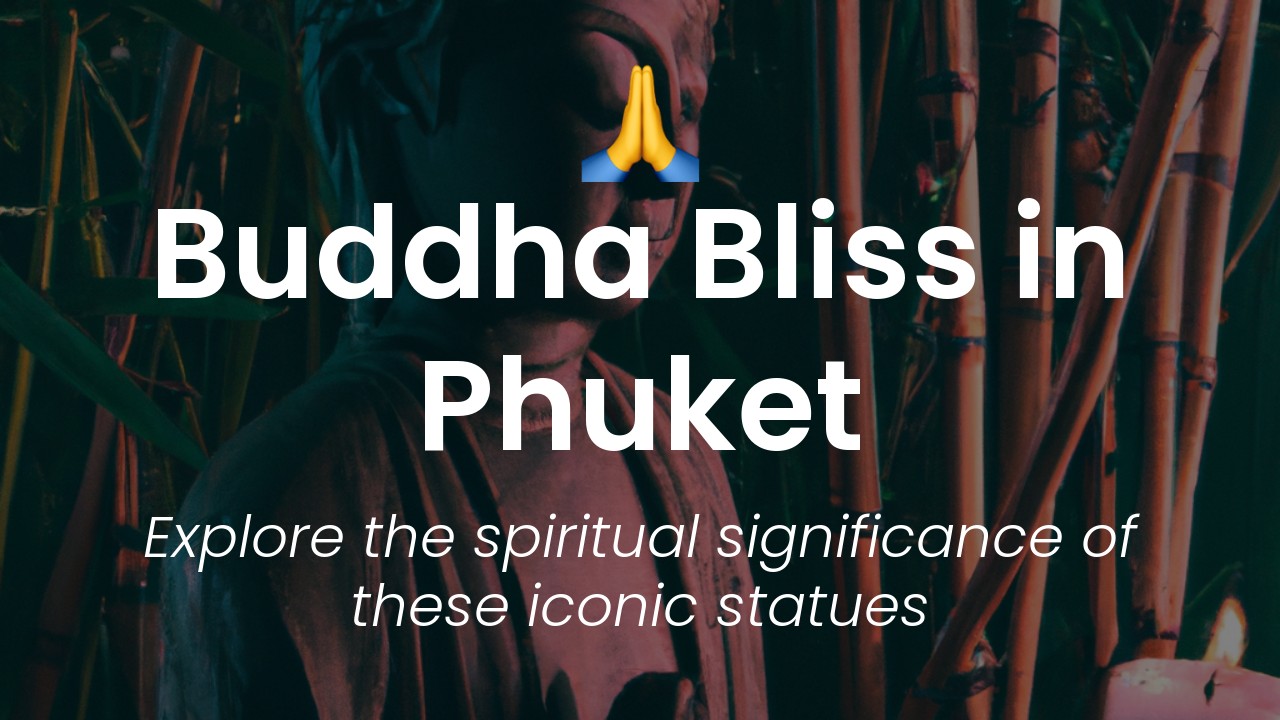Sawatdee ka, fellow travelers! Today I'm thrilled to share with you the secrets of Thai monuments and temples, focusing on the meaningful and intricate symbols used within Buddhism. As a Thai person, I grew up surrounded by these beliefs and customs, and my passion for unlocking and sharing their secrets has led me to create this article.
Every monument and temple in Thailand is a reflection of the country's deep religious belief and tradition. Since all of these structures are highly symbolic, I'm excited to open your eyes to their hidden meanings. Have you ever wondered about the colorful patterns and intricate designs on a temple's doorway? Or have you ever thought about what each specific statue represents within Buddhism when visiting one of Thailand's many cultural heritage sites? Well, you're in the right place to finally learn the real meaning behind these fascinating elements.
Through this article and my storytelling approach, you'll be inspired to explore the cultural richness of Thailand further. You'll have the confidence to visit temples and historic sites with a newfound understanding and appreciation of the symbols that make them so unique. So, without further ado, let's begin our journey to unlock the secrets of Thai monuments!
Understanding Buddhist Symbolism in Thai Monuments
Thai culture has been heavily influenced by Buddhism, which is why you can find many Buddhist monuments scattered throughout the country. However, these monuments are not just mere structures but are rich in symbolism and meaning. In this article, we will delve into the secrets of Thai monuments and unearth the hidden messages behind these beautiful structures.
The Significance of the Lotus Flower in Thai Buddhism
One of the most commonly seen symbols in Thai monuments is the lotus flower. In Buddhist symbolism, the lotus flower is a symbol of purity, enlightenment, and self-regeneration. This has to do with the fact that the lotus flower grows in muddy water but remains pure and beautiful above the surface.
The significance of the lotus flower is evident in Thai architecture, where it can be seen in sculptures and frescoes in temples and in palace grounds. For instance, the pedestal of the most important Buddha statue in Thailand, the Emerald Buddha, is shaped like a lotus flower.
The Meaning Behind the Buddha's Hand Gestures
Another frequently seen feature of Thai monuments, especially in Buddha statues, is the hand gestures or “mudras”. In Buddhist art, these hand gestures have specific meanings and are believed to have the power to evoke particular feelings or energy.
For example, the Bhumisparsha Mudra, which is seen in many Buddha images, symbolizes Buddha’s enlightenment. In this gesture, Buddha’s right hand reaches down with fingers pointing to the earth, representing Buddha’s victory over Mara, or earthly desire, during his journey to enlightenment.
The Importance of the Pagoda in Thai Culture
The Pagoda, also known as Chedi in Thai, is a significant architectural landmark in Thailand and other Southeast Asian countries. The Pagoda is a symbol of Buddhism and represents the principle of enlightenment. It is a type of tower with multiple levels that represent different stages of spiritual growth.
The Phra Pathom Chedi in Nakhon Pathom is the tallest Pagoda in Thailand, standing at an impressive 120 meters. This Pagoda is also believed to hold relics of Buddha and, therefore, is considered as one of the most sacred places in Thailand.
The Significance of the Elephant in Thai Buddhism
Elephants have been a part of Thai culture for centuries and are considered as a sacred animal. In Thailand, elephants symbolize intelligence, strength, and wisdom. In Buddhism, elephants are also revered as a symbol of the Buddha’s past lives as an animal before he was born as a human.
You can see the importance of elephants in Thai culture in many ways, including the use of elephants in important ceremonies like the Royal Ploughing Ceremony, and in Thai mythology, where the god Indra rides on a three-headed elephant known as Erawan.
The Story of Garuda in Thai Mythology
Garuda, in Thailand, is a bird-like creature that is an essential element in Buddhist mythology. In Thai culture, Garuda is revered for its power and the ability to protect against evil spirits. Garuda is also seen carrying or holding important spiritual symbols, such as Buddhist wheels and swords.
You will see Garuda sculptures and images in many Thai temples, where they are mostly found at the entrance of the temple, warding off evil spirits and symbolizing protection. You may also have seen the popular logo of the Thai Airways – which has Garuda in the foreground, showcasing Thailand's rich cultural heritage.
The Hidden Meanings in Thai Temple Murals
Frescoes or murals on the interior walls of Thai temples are full of stories and symbolism. These stories, mostly stories from the life and enlightenment of Buddha and Jataka tales, are depicted through elaborate and intricate paintings.
For example, the Seven Days of Buddha’s Life is a very popular mural, covering the entire wall of many temples, depicting the seven significant events in Buddha’s life, including the Buddha’s birth, enlightenment, and his first sermon.
In conclusion, Thai monuments are not just architectural achievements but are also a canvas for Buddhist symbolism and mythology. To truly understand and appreciate the significance of these monuments, one must delve deep into the stories and meanings behind them. The next time you visit a Thai temple or monument, take the time to observe your surroundings and see if you can spot the hidden messages behind the art and architecture.

